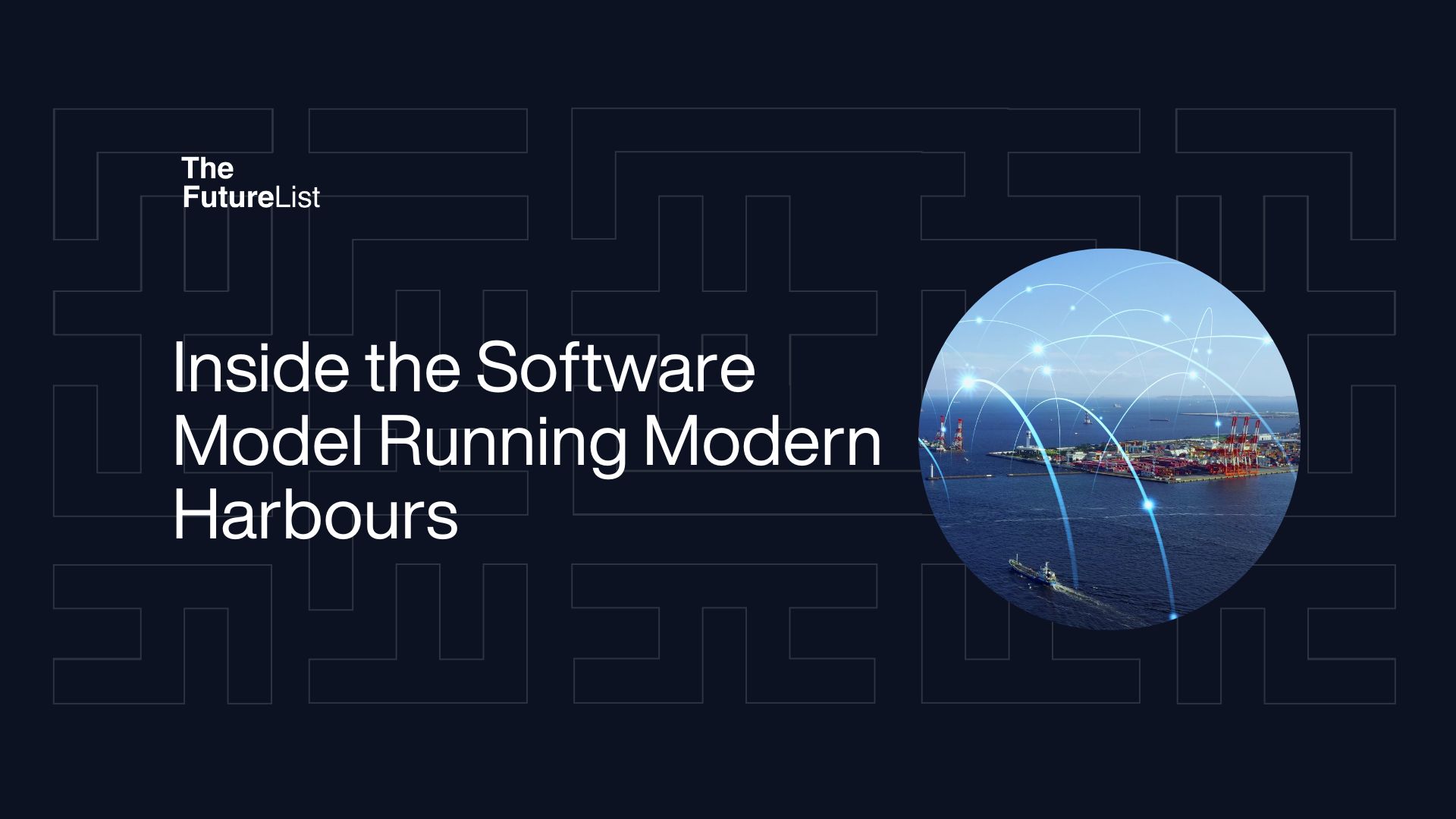
Inside the Software Model Running Modern Harbours
By Eric Kamande
What a Port-Wide Digital Twin Looks Like
A port-wide digital twin is a live, three-dimensional software replica of every quay, crane, tug, and container stack inside the harbour perimeter. It ingests Automatic Identification System (AIS) traffic, tide gauges, weather radar, and equipment telemetry in real time, letting operators trial berth schedules, tug assignments, and yard moves in silico before issuing real-world commands. Lighter twins also exist, some ports begin with data-only models that track berth windows or crane health, then layer on full 3-D visualisation once budgets and confidence grow.
Rotterdam’s proof point
Port of Rotterdam completed its twin, built with IBM and Dutch autonomy startup Captain AI, which refreshes every few seconds. After a five-year deployment, the port’s 2024 KPI report credits the system with a 20% drop in average vessel wait time and a 15% rise in berth utilisation versus 2022, all without adding staff.
Global ripple
- Singapore’s Maritime & Port Authority activated a Maritime Digital Twin for Tuas Mega Port in March 2025. The stated goal is to cut turnaround time by synchronising autonomous tugs, shore-power hookups, and yard vehicles within the model before vessels dock.
- PortXchange, a Rotterdam spin-out, licences “digital handshake” modules, which cover only berth allocation and ETA updates, to midsize terminals in Valencia, Houston, and Tema. Early users report berth-clash incidents down by as much as 25%.
- Finnish firm Wärtsilä Voyage piloted its Navi-Port module with Hamburg in late 2024, cutting ship fuel use on the North Sea approach by 8 %. Memoranda signed this year with Busan and Antwerp-Bruges aim to extend the same just-in-time arrival network.
Why the sudden urgency?
The World Bank’s Maritime Connectivity Index puts 2024 congestion losses near US$10 billion. With volumes rebounding, ports need throughput gains that don’t require new concrete.
Digital twins deliver two immediate wins:
- Predictive scheduling. Vessels receive real-time, data-verified slots, slicing idle fuel burn at anchor.
- Resource orchestration. Tugs, pilots, and yard equipment are summoned only when the twin confirms readiness, trimming overtime.
The interoperability challenge
Rotterdam already exports lightweight twin packets that shipping lines can run onboard. If Singapore, Hamburg, and Antwerp adopt the same schema, a vessel could travel inside an unbroken chain of digital replicas, optimising speed, fuel burn, and crew plans across an entire route rather than one port at a time.
What ports of all sizes can do now?
Full-scale twins are capital-heavy, but vendors now sell modular layers, predictive crane health, berth-window optimisation, tidal analytics—so smaller terminals can digitise their worst bottlenecks first and add more later. As early adopters publish hard numbers, cost hesitancy is likely to fade.
Outlook
When twin data flows port-to-port, schedules can be harmonised across whole trade lanes, trimming bunker costs and CO₂ while smoothing global supply chains. Competitive advantage will shift from who owns the most concrete to who maintains the most accurate and shareable software mirror.
Get innovation insights from The FutureList weekly. Subscribe to our newsletter here
Categories
- Agritech
- Artificial Intelligence
- Biotech
- Blockchain
- Climate Tech
- Data Infrastructure
- Edtech
- Events
- Fashion
- Fintech
- Healthtech
- Infrastructure
- Innovation Memos
- Innovation Scout Program
- Insight
- Insurtech
- Machine Learning
- Martech
- Mobility
- Music and Media
- Partner Offers
- Perks
- Procurement
- Proptech
- Retailtech
- Ridehailing
- Ridesharing
- Robotics
- Space Aviation
- Supply Chain
- Talent
- Telecoms
- Uncategorized
- Venture Capital
- Wastetech
- Women In Tech
Recent Posts
- How AI Surveillance is Shaping Public Safety in Smart Cities
- Innovation Memo with Zencey: Bringing Equitable Healthcare to Africa
- Inside the Software Model Running Modern Harbours
- The Formula for Future Speed: Data-Driven Performance in Racing
- Leveraging Next-Gen Endoscopic Interventions and Innovations for Healthcare